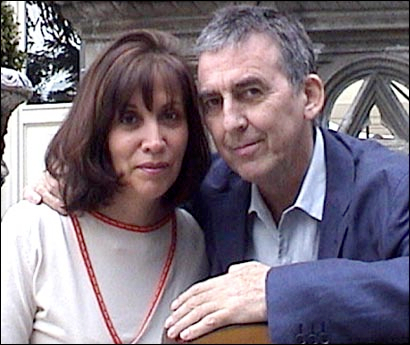Scorsese Eyes 2011 Bow for George Harrison Film
By Jay A. Fernandez | May 27, 2010

Martin Scorsese says he hopes to release his George Harrison documentary next year, and is promising plenty of unseen footage and unheard songs.
He has been developing the project with the former Beatle’s widow, Olivia, for the past three years, even while he was working on his recent thriller “Shutter Island.”
Titled “Living in the Material World: George Harrison,” the documentary will take on the whole of Harrison’s life before, during and after his time in the world’s most popular and successful band.
Among other things, Scorsese says he related to Harrison’s quest for “spirituality,” something the filmmaker has explored his whole life, and especially in movies from “Mean Streets” to “Kundun.”
“That subject matter has never left me,” said Scorsese. “The more you’re in the material world, the more there is a tendency for a search for serenity and a need to not be distracted by physical elements that are around you.”
“He always said he gave his nervous system for the Beatles,” Olivia Harrison added.
Scorsese met Harrison several times, first when he, Jack Nicholson and Robbie Robertson knocked on his door in a frantic moment during the filming of “The Last Waltz” in the late ’70s, and then again in the early ’90s.
Olivia initiated the current project several years ago because after having been approached by numerous production companies, including the BBC, looking to make a documentary about Harrison from the moment he died of cancer in 2001. She resisted at first because Harrison had always wanted to do his own documentary using his own archive of videos.
Eventually, she realized it “was something that needed to be done,” and was pointed to financier Nigel Sinclair, who had produced the Bob Dylan documentary “No Direction Home” that Scorsese directed. But still, it was a traumatic experience for her to dig back through all of that history.
“This is a deeply personal journey for me, it’s been excruciating,” she said. “I’ve been archiving for five years — 35 years, really. Throwing cassettes and letters in drawers, little things and pieces of paper that you find that say, ‘Goats on my roof.’ You think, What does that mean?”
She said that during the research period, Scorsese would ask for something from 1945, she would dig something up, and then get lost in old letters, drawings, ideas and reveries. Or she’d come across a lost cassette from 1966 with music she had never heard.
“So that’s been wonderful, but emotional, too,” Olivia said. “But I feel really safe, I feel protected. Marty had a connection with George, and they spent time together. And he’s passionate about film and music as George was passionate about music and film.”
“This is undertaken, not casually,” Scorsese said. “It’s a great deal of reticence and thinking.”
And juggling, since the director was working on it as he developed and shot “Shutter Island.” His editor on the Dylan doc, David Tedeschi, has been working on the Harrison piece as well, and would forge ahead when Scorsese was indisposed on the fiction film. Scorsese noted that their work on the Dylan film stretched from “The Aviator” through to “The Departed.”
“‘Shutter Island’ took a great deal out of me,” Scorsese said. “This was a form of interest and a really good sense of ignorance — not knowing what you’re getting into. I know the level is deep, and I know at some point there’s going to be conflicts between the projects. But this is a labor of love, it’s not something that has that kind of a deadline.”
So Scorsese spent weekends and margins looking at footage and cuts of the Harrison work, and doing research.
The film will feature plenty of rare footage since Harrison saved everything and left a ton of material. Scorsese said all of that personal music led the way to the nonchronological exploration they wanted to take.
“Ultimately, we’re trying to have the development of his own music tell the story, if we can,” he said. “And the images that he shot, that (Olivia) shot, a lot of this is telling the story. There are some famous bits and some very interesting new material.”
Olivia added: “I think it’s not only about George Harrison, but about how a person moves through life and deals with his own life. And it was a pretty intense life for a young person.”
In addition to his achievements as a master filmmaker and preservationist, Scorsese has now made a number of films — “Shine a Light,” “Last Waltz,” “No Direction Home,” “The Blues” (he was even an editor on the “Woodstock” concert film) — that he is personally building a library of the history of rock.
“We certainly haven’t done it intentionally,” Scorsese says. “We never really intended to make a chronicle of rock music. But the music inspires so much of what I do with my fiction films that they both seem to be blending now. They seem to be interweaving.”















